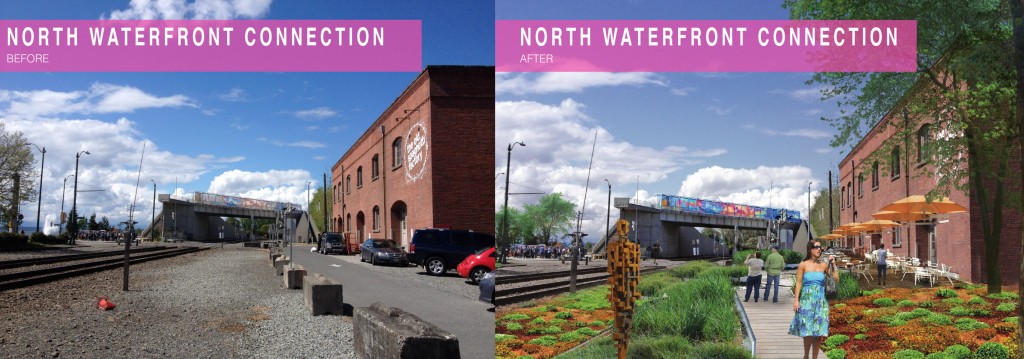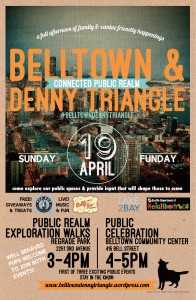When the population of a city doubles, its economic productivity goes up 130 percent. As noted in a paper by the MIT Media Lab, what makes the sum greater than the parts is people’s increased chance of face-to-face interaction. It makes sense as it lets people learn from each other, share ideas, and come up with ways to improve their lifestyle and the productivity of their work. It is exactly this kind of rich social experience that attracts many to cities in the first place.
So as Seattle continues to increase in population, it is important to maximize the return on the investment associated with it by ensuring that high quality public social space is available across the city. Such space includes high quality walking connections between neighborhoods, parks, and plazas. Besides improving people’s health and happiness, they also directly create new retail opportunities.
Two years ago, a group of citizens and local businesses called the Lake2Bay Coalition formed to improve the public realm in central Seattle. It is now a project supported by the Seattle Parks Foundation and has received a grant from the Bill and Melinda Gates Foundation. The premise is that with hundreds of millions invested in the Mercer Corridor and Central Waterfront, and with the reconnecting of the street grid north of Denny Way after the SR-99 tunnel is completed, there is a once-in-a-lifetime opportunity to connect Seattle Center, Downtown, the new waterfront, and SLU through a web of signature pedestrian-friendly streets.
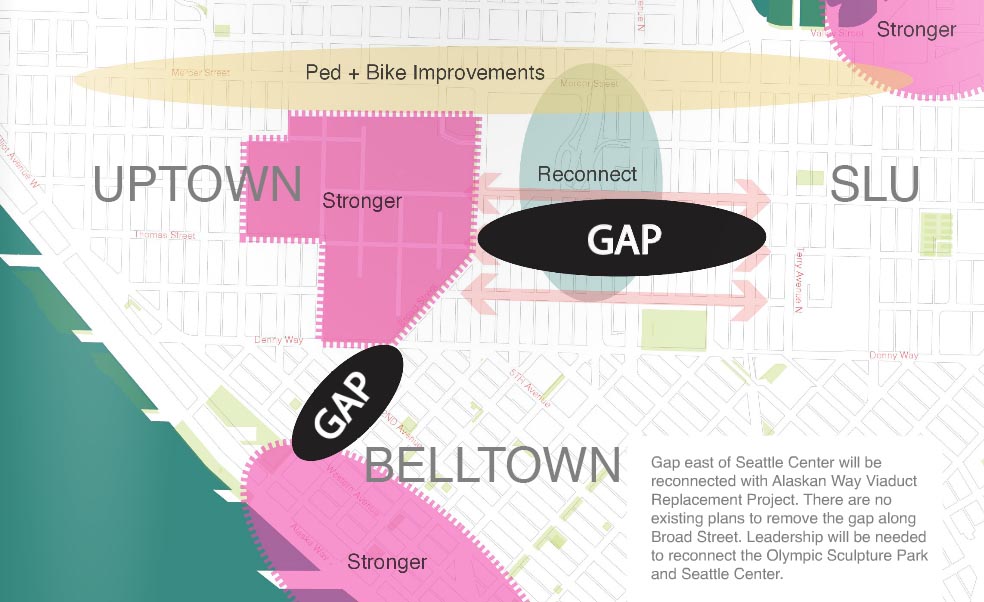
The Goal
The aim is to integrate cultural, residential and work functions with a natural element on the public right-of-way–spaces that let people relax when out for recreation, but also comfortably support going to or even holding a work meeting when appropriate. In this way it is possible to facilitate the unplanned interactions that enrich everybody’s lives while providing the needed mobility. A successful model can then advise the design of corridors in other parts of the city.
The work begins with learning from the success of others:



The Opportunities
So what can we do in Seattle? Lake2Bay commissioned Framework, a multi-disciplinary design firm to identify and inventory opportunities within Belltown, Denny Triangle, and South Lake Union. They have a challenging environment to work with, as land use patterns in the area were set many years ago and limit what can be done.
With Seattle Center as the hub of this larger neighborhood, the following improvement opportunities were identified and are illustrated with suggested graphics. Note that the graphics do not represent design proposals, but rather serve to spark the imagination of the public:
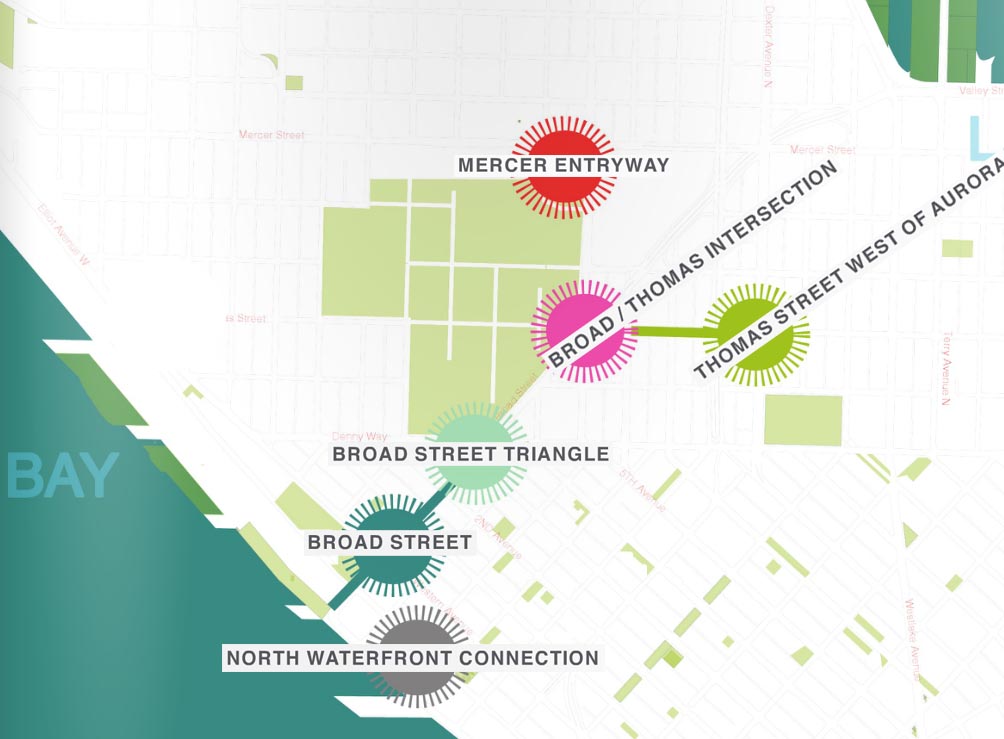
North Waterfront Connection
The North Waterfront is likely to be redesigned right after the Central Waterfront is finished. Given the low traffic volumes of Alaskan Way, a road diet is probably on the horizon. All of its piers are in use, however, which limits opportunities for open space on the water side. The space between the railway and The Old Spaghetti Factory could serve that function near the north end.
Broad Street Triangle
After the closing of the viaduct, traffic volumes on Broad are expected to fall by 60%. It would be possible to increase walking space, emphasize the view of Elliot Bay and incorporate design elements relating everything to Olympic Sculpture Park. This path would serve as the main connection from the Waterfront to Seattle Center.
As we get closer to Seattle Center the design elements can reflect that proximity.
Broad/Thomas Intersection
This could become an enhanced entryway to Seattle Center and the Space Needle.
Thomas Street West of Aurora
Thomas Street, a designated green street, is bordered on one side by a Seattle City Light substation. In its current condition, it is a pedestrian no-mans-land.
It is, however, a great place to highlight the infrastructure with clever art (e.g. as is done at the SLU substation). It can also provide a lighted bike path and serve as a night-time connection between SLU and Seattle Center.
Mercer Entryway to Seattle Center
This is another pedestrian no-mans-land that, given sufficient love, can become a signature entrance to Seattle Center.
How You Can Shape the Future of the Plan
These opportunity visualizations are a first step in determining the space and amenities needed on the street to serve what should be one of most walkable parts of the city. They serve to start a conversation with the community. Lake2Bay will hold three outreach events where you will have a chance to provide feedback and suggest new ways to improve the public realm. Here’s the first event:
Public Realm Walk
When: Sunday, April 19, 3-4 pm.
Where: Starts at the Cascade Dog Park Bell & 3rd 3:00, followed by a walk through the neighborhood.
Compare notes and socialize 4:00-5:00 at Belltown Community Center.
The level and magnitude of development in Seattle today is unprecedented. Reflective of that, changes to the public realm will affect its urban fabric for generations to come. If you care about how your community shapes up and the type of social interaction it grows to support, participating in this event is a must.
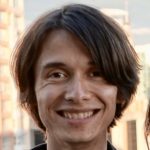
Anton Babadjanov
Anton has been living in the Pacific Northwest since 2005 and in Seattle since 2011. While building technology products during the day, his passion for urban planning and transportation is no less and stems from a childhood of growing up in the urban core of a small European city.


